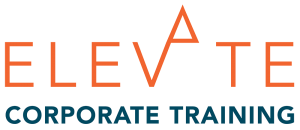Nurturing a prospect through the buying journey and finally getting that sale can be a rewarding experience. It’s the end game that reminds you all that work you put into the sale was worth it. It can also be frustrating and difficult.
There are steps you can take to make it easier and improve your conversion rates.
- Pre-Qualify Prospects
- Evaluate Your Qualified Prospects
- Educate Yourself
- Create A Valid Business Reason
- Probe for Pain
- Practice Active Listening
- Focus Your Unique Selling Proposition
- Sell Benefits Over Features
- Market Yourself
- Sell Price By Selling Value
- Encourage Repeat Business
- Stay Focused on Lifetime Customer Value
- Nurture Your Prospects
- Become A Lifetime Learner
- Stay Positive
- Strategic Planning: How Do I Develop A Sales Plan?
- Ask For Referrals
Pre-Qualify Prospects
It sounds so obvious, but if prospects aren’t qualified, they aren’t going to buy your products. Any effort you put into trying to sell them is just a waste of time.
Qualified prospects have a demonstrable need for your product, the ability or budget to pay for it, and the authority to make the prospect. Establish all three of the steps before spending too much time.
Evaluate Your Qualified Prospects
Not all prospects are created equal. Evaluate the qualified prospects and focus on high-value customers first.
Educate Yourself
Before you reach out to customers, do some basic research. With all the resources available online, it’s easy enough to look at a prospect’s website, do a Google search on their business and industry, and check them out on LinkedIn. A little bit of knowledge can help open doors.
Create A Valid Business Reason
Using the knowledge that you have acquired, you can often turn a cold call into a warm one. Create a VBR (Valid Business Reason) to reach out to a prospect. Are they opening a new branch or launching a new product line? This may create an opportunity for you.
A VBR works both ways. You should have a valid reason for contacting a prospect, but you should also have your own VBR. What is your goal for the contact? Is it to book an appointment, make a sale, or to share information? This will you hone your interaction and get conversions.
Probe for Pain
Customers don’t buy products. They buy solutions.
Before you make a sale, you’re going to need to find the customer’s pain points. What problem can your product or service solve? Typically, problems will fall into one of these three areas:
- Process or Business Systems
- Productivity or Efficiency
- Financial
It’s crucial to identify the pain points as quickly as possible to focus your sales efforts.

Practice Active Listening
Most salespeople are naturally great talkers. As they say, they have “the gift of gab.” The best salespeople, however, are naturally great listeners. They ask probing questions, get their prospects to talk, and really listen to what they are saying.
Don’t just run down a checklist of questions. Listen to the answers and frame the next question based on the response. Paraphrase the prospect’s response to make sure you understand clearly.
Focus Your Unique Selling Proposition
As you move your customers from awareness to interest, it’s also important that you begin to make the customer understand why they should buy from you rather than a competitor. Develop your Unique Selling Proposition (USP) in a way you can clearly articulate what makes your brand special.
Sell Benefits Over Features
Focus on the benefits of your products and how they can solve customer problems. Features are only important if the product does what the customer needs.
Too many salespeople start listing product features before they’ve sold the prospect on the value of their solution.
Market Yourself
Before customers are going to buy your product, they’re going to first have to buy-in to you. Until you establish trust and credibility, they won’t believe your sales pitch.
Make sure you establish yourself first before you ask for the sale.
Sell Price By Selling Value
Price is always an important part of the sales process, but it’s more about the perceived value your product represents. If customers truly believe your product will do what you say it will – and solve their problem – price becomes less of an obstacle.
Encourage Repeat Business
The cheapest way to acquire customers is to get repeat business. You’ve already established a relationship. Every time you can encourage a customer to buy again, you’re decreasing your cost of customer acquisition – one of the biggest expenses for any sales operation. Repeat customers spend 33% more than new customers.

Stay Focused on Lifetime Customer Value
The best sales you make are the ones that build a relationship that will endure over time. This means making sure the product or service the customer is buying will truly yield the results they need.
You put too much effort into nurturing a prospect and closing a deal to have it be a one-off sale.
Nurture Your Prospects
If you’re not regularly engaging with your prospects and customers, it’s easy for them to forget you. Make sure you stay in contact with them. However, it’s not just about staying in touch, it’s about providing them value each time you interact.
From personal thank you notes to sharing industry news to offering congratulations, you can use trigger events as a reason to reach out. When you do, though, share some relevant information that reminds customers about the value you bring to the equation. When you can provide strategic advice or information of value, it helps your credibility.
Become A Lifetime Learner
To be an effective salesperson, you should always be learning. Educate yourself continuously on your customers, their industries, and their needs. Know your product line intimately. Invest in sales training for yourself or your team to sharpen and improve your skills.
Stay Positive
It’s easy to let the sales process wear you down especially if you’re doing B2B sales which tend to have a long sales cycle. It’s crucial, however, that you stay positive.
Prospects pick up emotional and non-verbal signals. They can tell when your tired or feel defeated. Before you make contact, do what it takes to pump yourself up and project a positive attitude. After all, if you believe in yourself and your product, you should be excited to tell someone else about it!
Strategic Planning: How Do I Develop A Sales Plan?
Without a plan, you can waste a lot of time. At the beginning of each quarter, you need to outline your goals and work backward to the specific actions you need to take to hit those goals. Each month, each week, and each day, you should review these goals and focus on the key action drivers that will help you reach them.
Ask For Referrals
When you make a sale, ask customers if they know someone else that would benefit from your products or services.
Referrals are powerful. They provide an implied endorsement for new customers from someone they trust.
Top performers ask for referrals consistently. There’s a good reason. Peer recommendations influence more than 90% of B2B buying decisions.
Stick To It
Finally, remember that sales take time and they take consistency. Too many salespeople give up too soon. Persistence pays off.

